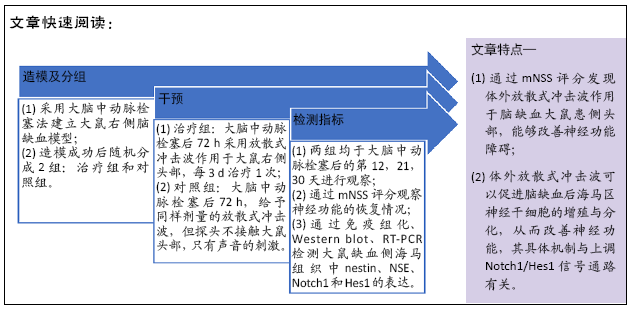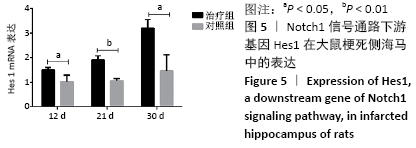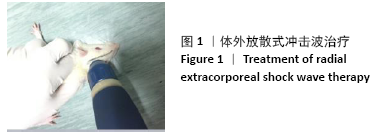[1] ZIAEE SM, TABESHMEHR P, HAIDER KH, et al. Optimization of time for neural stem cells transplantation for brain stroke in rats. Stem Cell Investig. 2017;4:29.
[2] WRITING GROUP MEMBERS, MOZAFFARIAN D, BENJAMIN EJ, et al. Heart Disease and Stroke Statistics-2016 Update: A Report From the American Heart Association. Circulation. 2016;133(4):e38-360.
[3] WARDLAW JM, MURRAY V, BERGE E, et al. Recombinant tissue plasminogen activator for acute ischaemic stroke: an updated systematic review and meta-analysis. Lancet. 2012;379(9834): 2364-2372.
[4] 吴亚哲,陈伟伟.中国脑卒中流行概况[J].心脑血管病防治,2016, 16(6):410‐414.
[5] TIBÆK M, DEHLENDORFF C, JØRGENSEN HS, et al. Increasing Incidence of Hospitalization for Stroke and Transient Ischemic Attack in Young Adults: A Registry-Based Study. J Am Heart Assoc. 2016;5(5):e003158.
[6] YU H, CAO B, FENG M, et al. Combinated transplantation of neural stem cells and collagen type I promote functional recovery after cerebral ischemia in rats. Anat Rec (Hoboken). 2010;293(5):911-917.
[7] WEI WJ, SHI B, GUAN X, et al. Mapping theme trends and knowledge structures for human neural stem cells: a quantitative and co-word biclustering analysis for the 2013-2018 period. Neural Regen Res. 2019;14(10):1823-1832.
[8] ADACHI K, MIRZADEH Z, SAKAGUCHI M, et al. Beta-catenin signaling promotes proliferation of progenitor cells in the adult mouse subventricular zone. Stem Cells. 2007;25(11):2827-2836.
[9] HAN X, JU JH, SHIN I. Glycogen synthase kinase 3-β phosphorylates novel S/T-P-S/T domains in Notch1 intracellular domain and induces its nuclear localization. Biochem Biophys Res Commun. 2012;423(2): 282-288.
[10] BORGGREFE T, LAUTH M, ZWIJSEN A, et al. The Notch intracellular domain integrates signals from Wnt, Hedgehog, TGFβ/BMP and hypoxia pathways. Biochim Biophys Acta. 2016;1863(2):303-313.
[11] JARGIN SV. Shock wave therapy of ischemic heart disease in the light of general pathology. Int J Cardiol. 2010;144(1):116-117.
[12] QURESHI AA, ROSS KM, OGAWA R, et al. Shock wave therapy in wound healing. Plast Reconstr Surg. 2011;128(6):721e-727e.
[13] LEE JH, CHO SH. Effect of extracorporeal shock wave therapy on denervation atrophy and function caused by sciatic nerve injury. J Phys Ther Sci. 2013;25(9):1067-1069.
[14] ZHANG D, MENG Y, HAI H, et al. Radial Extracorporeal Shock Wave Therapy in an Individual With Primary Trigeminal Neuralgia: A Case Report and Literature Review. Am J Phys Med Rehabil. 2018; 97(5):e42-e45.
[15] WERNER C, BYHAHN M, HESSE S. Non-invasive brain stimulation to promote alertness and awareness in chronic patients with disorders of consciousness: Low-level, near-infrared laser stimulation vs. focused shock wave therapy. Restor Neurol Neurosci. 2016;34(4):561-569.
[16] KANG N, ZHANG J, YU X, et al. Radial extracorporeal shock wave therapy improves cerebral blood flow and neurological function in a rat model of cerebral ischemia. Am J Transl Res. 2017;9(4):2000-2012.
[17] YUEN CM, CHUNG SY, TSAI TH, et al. Extracorporeal shock wave effectively attenuates brain infarct volume and improves neurological function in rat after acute ischemic stroke. Am J Transl Res. 2015;7(6): 976-994.
[18] CHEN Y, XU J, HUANG Z, et al. An Innovative Approach for Enhancing Bone Defect Healing Using PLGA Scaffolds Seeded with Extracorporeal-shock-wave-treated Bone Marrow Mesenchymal Stem Cells (BMSCs). Sci Rep. 2017;7:44130.
[19] LEONE L, RAFFA S, VETRANO M, et al. Extracorporeal Shock Wave Treatment (ESWT) enhances the in vitro-induced differentiation of human tendon-derived stem/progenitor cells (hTSPCs). Oncotarget. 2016;7(6):6410-6423.
[20] XU L, ZHAO Y, WANG M, et al. Defocused low-energy shock wave activates adipose tissue-derived stem cells in vitro via multiple signaling pathways. Cytotherapy. 2016;18(12):1503-1514.
[21] ZHANG J, KANG N, YU X, et al. Radial Extracorporeal Shock Wave Therapy Enhances the Proliferation and Differentiation of Neural Stem Cells by Notch, PI3K/AKT, and Wnt/β-catenin Signaling. Sci Rep. 2017;7(1):15321.
[22] ZHANG R, ENGLER A, TAYLOR V. Notch: an interactive player in neurogenesis and disease. Cell Tissue Res. 2018;371(1):73-89.
[23] KUME T. Ligand-dependent Notch signaling in vascular formation. Adv Exp Med Biol. 2012;727:210-222.
[24] SUN F, MAO X, XIE L, et al. Notch1 signaling modulates neuronal progenitor activity in the subventricular zone in response to aging and focal ischemia. Aging Cell. 2013;12(6):978-987.
[25] WANG JJ, ZHU JD, ZHANG XH, et al. Neuroprotective effect of Notch pathway inhibitor DAPT against focal cerebral ischemia/reperfusion 3 hours before model establishment. Neural Regen Res. 2019;14(3): 452-461.
[26] IRVIN DK, ZURCHER SD, NGUYEN T, et al. Expression patterns of Notch1, Notch2, and Notch3 suggest multiple functional roles for the Notch-DSL signaling system during brain development. J Comp Neurol. 2001;436(2):167-181.
[27] FELLING RJ, COVEY MV, WOLUJEWICZ P, et al. Astrocyte-produced leukemia inhibitory factor expands the neural stem/progenitor pool following perinatal hypoxia-ischemia. J Neurosci Res. 2016;94(12): 1531-1545.
[28] CAI Z, ZHAO B, DENG Y, et al. Notch signaling in cerebrovascular diseases (Review). Mol Med Rep. 2016;14(4):2883-2898.
[29] 赵俊红,林阳阳,何晓阔,等.电针对脑梗死大鼠海马齿状回Notch1调控作用的研究[J].中国康复医学杂志,2018,23(5):520-524.
[30] 王丽娜,杨洋,王光,等.电针结合康复训练对缺血脑卒中大鼠Notch1与Notch4表达的影响[J].解剖科学进展,2018,24(2): 136-139.
[31] 钟晴,童骄,钟欣池,等.脑泰方提取物对大鼠脑缺血再灌注损伤后海马神经干细胞增殖及Notch1蛋白表达的影响[J]. 中华中医药学刊,2016,34(8):1823-1826.
[32] ZHAO JH, WANG B, WANG XH, et al. Effect of lncRNA GAS5 on the apoptosis of neurons via the notch1 signaling pathway in rats with cerebral infarction. Eur Rev Med Pharmacol Sci. 2019;23(22): 10083-10091.
[33] SCHMIEDT E, CHAUSSY C. Extracorporeal shock-wave lithotripsy of kidney and ureteric stones. Urol Int. 1984;39(4):193-198.
[34] MATTYASOVSZKY SG, LANGENDORF EK, RITZ U, et al. Exposure to radial extracorporeal shock waves modulates viability and gene expression of human skeletal muscle cells: a controlled in vitro study. J Orthop Surg Res. 2018;13(1):75.
[35] NIKOLIKJ-DIMITROVA ED, GJERAKAROSKA-SAVEVSKA C, KOEVSKA V, et al. The Effectiveness of Radial Extracorporeal Shock Wave Therapy for Chronic Achilles Tendinopathy: A Case Report with 18 Months Follow-Up. Open Access Maced J Med Sci. 2018;6(3):523-527.
[36] GERDESMEYER L, MAIER M, HAAKE M, et al. Physical-technical principles of extracorporeal shockwave therapy (ESWT). Orthopade. 2002;31(7):610-617.
[37] FU M, SUN CK, LIN YC, et al. Extracorporeal shock wave therapy reverses ischemia-related left ventricular dysfunction and remodeling: molecular-cellular and functional assessment. PLoS One. 2011;6(9):e24342.
[38] COOPER B, BACHOO P. Extracorporeal shock wave therapy for the healing and management of venous leg ulcers. Cochrane Database Syst Rev. 2018;6(6):CD011842.
[39] OMAR MT, ALGHADIR A, AL-WAHHABI KK, et al. Efficacy of shock wave therapy on chronic diabetic foot ulcer: a single-blinded randomized controlled clinical trial. Diabetes Res Clin Pract. 2014;106(3):548-554.
[40] TANG HY, ZHAO Y, LI YZ, et al. Effectiveness of extracorporeal shock wave monotherapy for avascular necrosis of femoral head: A systematic review protocol of randomized controlled trial. Medicine (Baltimore). 2019;98(14):e15119.
[41] SCHMITZ C, CSÁSZÁR NB, MILZ S, et al. Efficacy and safety of extracorporeal shock wave therapy for orthopedic conditions: a systematic review on studies listed in the PEDro database. Br Med Bull. 2015;116(1):115-138.
[42] LOHRER H, NAUCK T, KORAKAKIS V, et al. Historical ESWT Paradigms Are Overcome: A Narrative Review. Biomed Res Int. 2016;2016:3850461.
[43] SEOL PH, HA KW, KIM YH, et al. Effect of Radial Extracorporeal Shock Wave Therapy in Patients With Fabella Syndrome. Ann Rehabil Med. 2016;40(6):1124-1128.
[44] MIAO HC, WU F, DING J, et al. Effects of electroacupuncture intervention combined with polysaccharide of Gastrodia elata Blume on expression of nestin and cytokines of neural stem cells in the dentate gyrus of cerebral ischemia rats. Zhen Ci Yan Jiu. 2014;39(1):
40-45.
[45] WAT JJ, WAT MJ. Sox7 in vascular development: review, insights and potential mechanisms. Int J Dev Biol. 2014;58(1):1-8.
[46] HUANG L, LIU LF, LIU J, et al. Ginsenoside Rg1 protects against neurodegeneration by inducing neurite outgrowth in cultured hippocampal neurons. Neural Regen Res. 2016;11(2):319-325.
[47] BRAI E, MARATHE S, ASTORI S, et al. Notch1 Regulates Hippocampal Plasticity Through Interaction with the Reelin Pathway, Glutamatergic Transmission and CREB Signaling. Front Cell Neurosci. 2015;9:447.
[48] ZHAO J, SUI M, LÜ X, et al. Electroacupuncture promotes neural stem cell proliferation and neurogenesis in the dentate gyrus of rats following stroke via upregulation of Notch1 expression. Mol Med Rep. 2015;12(5):6911-6917.
[49] ZHANG S, WANG P, REN L, et al. Protective effect of melatonin on soluble Aβ1-42-induced memory impairment, astrogliosis, and synaptic dysfunction via the Musashi1/Notch1/Hes1 signaling pathway in the rat hippocampus. Alzheimers Res Ther. 2016;8(1):40.
|








